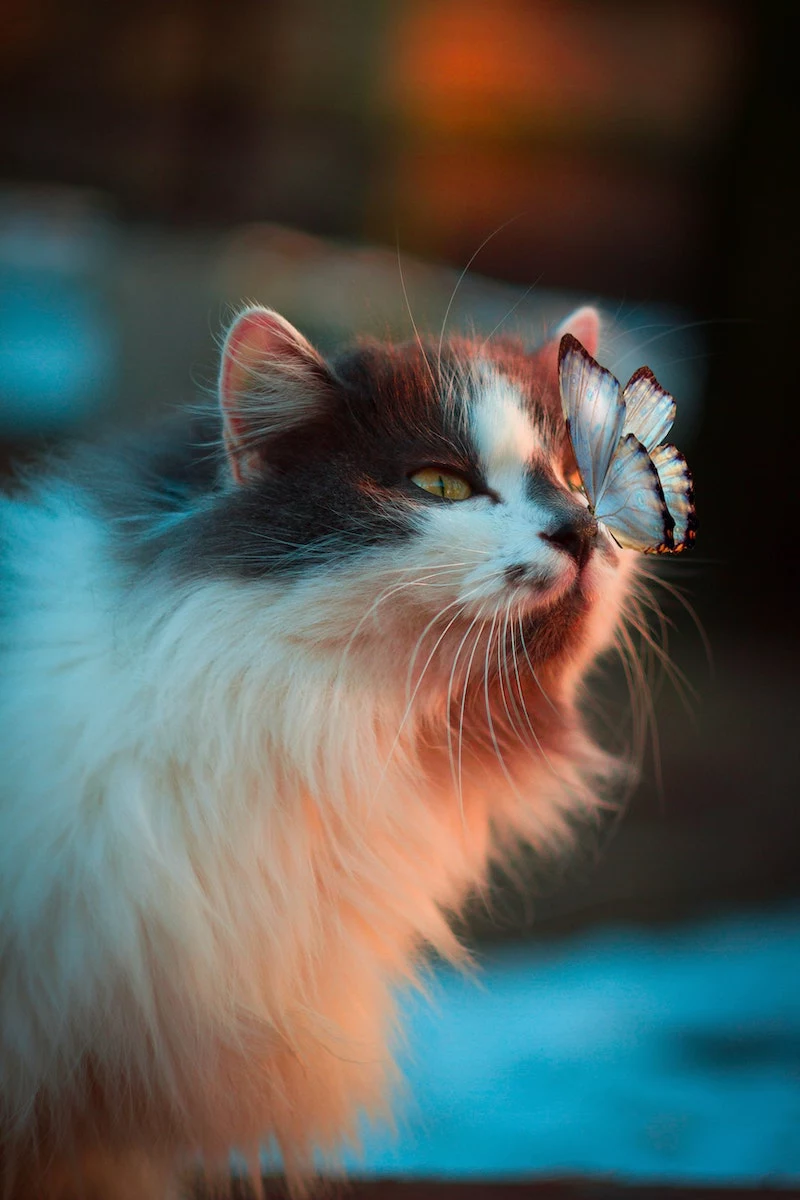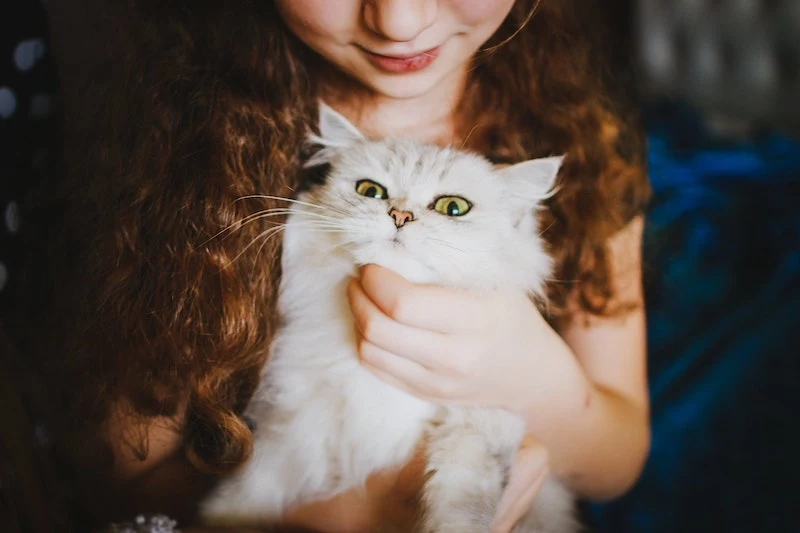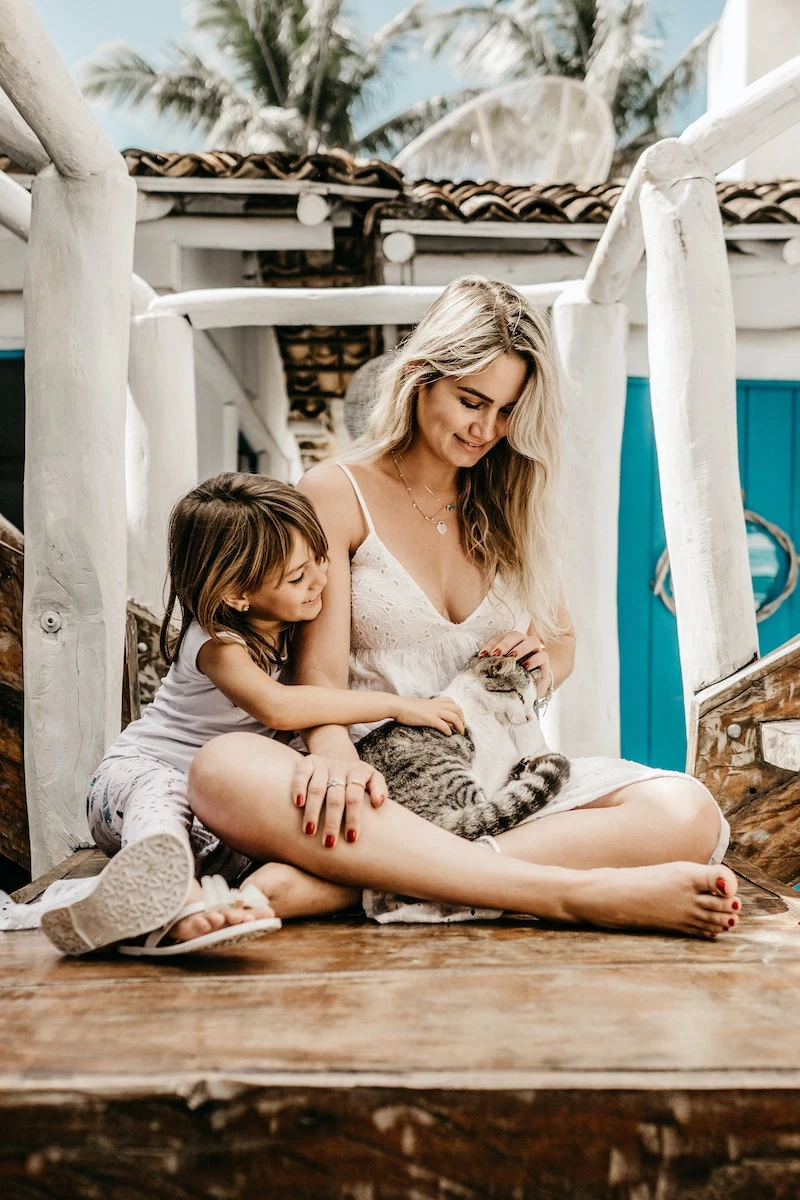Finding the Perfect Family Cat? A Pet Pro’s No-Nonsense Guide for Parents
After more than twenty years raising cats and helping them find their forever homes, I can tell you the number one question I get from parents is, “Which cat breed is best for my kids?” And honestly, it’s a great question, but it’s pointed in the wrong direction. There’s no secret list or magic formula that guarantees a perfect pet.
In this article
- First Things First: Where a Cat’s Personality Comes From
- How to Spot a Good Egg: Finding a Responsible Source
- Reading the Room: How to Assess a Cat’s Personality Yourself
- Kitten vs. Adult Cat: The Real Deal
- Popular Breeds That Often Click with Kids
- The Money Talk: Budgeting for Your New Cat
- The Welcome Home Plan: Setting Everyone Up for Success
- A Final Word on Safety
- Inspirational Gallery
The truth is a lot more interesting than that.
Sure, breed traits can give you a general idea of a cat’s personality, but they’re more like a rough sketch than a finished portrait. Every single cat is an individual. The real secret to success isn’t about picking the right breed; it’s about picking the right individual cat and setting up your home so that everyone—two-legged and four-legged—can thrive. So, let’s skip the simple lists and dive into what really matters: how to read a cat’s personality, what to ask before you commit, and how to build a bond that will last a lifetime.

First Things First: Where a Cat’s Personality Comes From
Before you even think about breeds, you’ve got to understand what makes a cat tick. It’s a mix of their genetic wiring and, maybe even more importantly, their early life experiences. I’ve seen this firsthand countless times. The tiny window between two and seven weeks of age is when a kitten’s social programming gets set. What happens then shapes how they see the world forever.
Kittens that grow up in the middle of a busy house, or “underfoot,” learn that life is noisy. The vacuum cleaner, clanging pans, and kids laughing are just background music. They get handled often and gently by different people, which builds a solid foundation of trust. On the flip side, a kitten raised in a quiet back room with little human contact can easily grow up to be skittish and fearful. No amount of good breeding can completely fix a rocky start.

This is exactly why the source of your cat is the most important decision you’ll make. A truly responsible breeder or a well-run shelter can tell you every detail about a cat’s upbringing. That’s your first clue.
How to Spot a Good Egg: Finding a Responsible Source
Okay, so you know the source matters. But what does a “good” source actually look like? Most people don’t know what to ask, so they don’t. Let’s fix that.
When visiting a breeder, here’s your checklist:
- Ask to see the environment. Are the kittens being raised in the heart of the home, or are they stashed away in a basement or garage? You want to see them interacting with daily life.
- Question them about health screening. A great breeder will proudly tell you about screening their cats for common genetic issues like HCM (Hypertrophic Cardiomyopathy, a serious heart condition). If they get defensive or dismiss the question, that’s a huge red flag.
- Watch how they interact with the cats. Do they treat the animals like beloved pets or just inventory?
- Do they offer a health guarantee? Professionals stand behind their animals and will offer a contract with a health guarantee.
And for a shelter, don’t be shy to ask:

- “What can you tell me about this cat’s history?” The staff and volunteers are your best resource. They spend tons of time with these animals and can give you an honest rundown of their personality.
- “How is this cat with handling?” They can often tell you if a cat is a lap-lover, a bit sensitive about its paws, or just needs a slow approach.
- “Has this cat been around kids or other pets before?” This is invaluable information for a family.
Reading the Room: How to Assess a Cat’s Personality Yourself
When you’re finally meeting a potential new family member, it’s easy to get swept up in the cuteness. But you need to put on your detective hat. These are a few little tests I use to get a read on a cat’s true nature.
First, just watch. Before you even interact, see how the cat or kitten behaves with its buddies. Is it the one bullying everyone else? Or is it the one hiding in the corner? You’re looking for that balanced, middle-of-the-road personality—a cat that plays but also knows when to back off. That kind of temperament is golden for a home with unpredictable kids.

Next, ask to spend some time with the cat in a quiet room. Here’s what to try:
- The Startle & Recover: Make a soft but sudden noise—jingle your keys or give a light clap. A resilient cat will startle, then look toward the sound with curiosity. If it bolts for cover and stays hidden, it might be too anxious for a high-energy home.
- The Cuddle Check: Gently pick the cat up, with one hand supporting its chest and the other under its hind legs. Does it settle, even for a second? Or does it immediately go into full-on panic mode? A cat that tolerates being held is a great sign.
- The Curiosity Test: While holding it, gently touch its paws, take a quick peek in its ears, and lift its lip. You’re just checking its tolerance for being handled. A little grumble is fine, but intense fear or lashing out is a warning sign that grooming and vet visits could be a real battle.
- The Play Style Preview: Grab a wand toy and see how it plays. Is it enthusiastic but gentle with its paws? Or is it instantly grabbing your hand and kicking with its back feet? This tells you a ton about its bite inhibition, which is absolutely critical around kids.

Kitten vs. Adult Cat: The Real Deal
It’s the classic dilemma: do you get an adorable, playful kitten or a calm, established adult? To be frank, there are major pros and cons to both.
A kitten is a ball of fun and a blank slate you get to shape. But that’s also the downside. They are a TON of work, like having a toddler who can climb your curtains. And their final personality? It’s a bit of a gamble, no matter how well you socialize them.
An adult cat, on the other hand, is a known quantity. That shy cat in the shelter will likely be a shy cat in your home. That confident lap-cat? That’s probably who he is. This can be a huge plus for families because you know exactly what you’re getting. The main con is that they might come with some baggage from a previous life, which may require a little extra patience.

Popular Breeds That Often Click with Kids
Alright, now that you know individual personality is king, we can talk about breeds whose general traits often make them fantastic family members. Remember, these are just tendencies, not rules!
- The American Shorthair: The Reliable Minivan. These cats are known for being easygoing, healthy, and adaptable. They have a moderate energy level—happy to play, but just as happy to watch the action from the sofa. Their grooming is a breeze (a quick brush once a week), making them an awesome choice for first-time cat owners. Heads up: they love to eat, so you’ll need to watch their diet to keep them from getting chunky.
- The Ragdoll: The Gentle Floof. Famous for their puppy-dog personalities and tendency to go limp when held, Ragdolls are true companions. They are gentle players and incredibly affectionate. But that gorgeous coat is NOT maintenance-free. You’re signing up for combing it at least a few times a week to prevent painful mats. Also, Ragdolls are strictly indoor cats; their trusting nature makes the outdoors a dangerous place for them.
- The Maine Coon: The Gentle Giant. Often called the “dogs of the cat world,” these big, shaggy cats are good-natured and playful. They mature slowly, so you get a kitten-like personality for years. Their large, sturdy build is a plus with kids. That said, their coat requires daily brushing, and they need an extra-large litter box (seriously, the standard size won’t cut it) and have a bigger food budget.
- The Birman: The Balanced Beauty. Birmans offer a wonderful middle ground. They’re people-oriented like a Ragdoll but have a more playful, curious spark. The best part? Their silky, single-layer coat is surprisingly resistant to matting, usually only needing a weekly comb-through. It’s a huge advantage for a busy family that wants a long-haired cat without the intense grooming of a Ragdoll or Maine Coon.
Oh yeah, and let’s not forget the most popular “breed” of all…

The Shelter Superstar: The Domestic Shorthair
I may be a purebred enthusiast, but I’d be doing you a disservice if I didn’t make a huge case for the good old-fashioned mixed-breed cat from your local shelter. Their genetic diversity often makes them incredibly healthy. And as we talked about, adopting an adult means you get a cat with a proven personality. The shelter staff can point you to a cat they know is gentle, confident, and a great fit for your family.
The Money Talk: Budgeting for Your New Cat
This is the part no one likes to talk about, but it’s one of the most important. A cat is a significant financial commitment.
First, the adoption cost. A purebred kitten from a reputable breeder can cost anywhere from $1,500 to over $3,000, reflecting the cost of health screenings, high-quality care, and genetics. In contrast, an adoption fee from a shelter is typically between $75 and $200, and it usually includes spaying/neutering, initial vaccinations, and a microchip. It’s an incredible value.

Then come the one-time setup costs. Here’s a quick shopping list:
- Carrier: $30 – $60
- Litter Box: $15 – $50 (get a big one!)
- Scratching Post/Tree: $25 – $80+ (don’t skimp here, your couch will thank you)
- Food & Water Bowls: $10 – $30
- Initial Toys & Bed: $20 – $50
Expect to spend $100 to $250 just to get set up. After that, your ongoing monthly costs for high-quality food, litter, and toys will probably run between $50 and $80. And don’t forget to budget for annual vet checkups ($100-$200) and potential emergencies. Pro tip: look into pet insurance. It can be a lifesaver.
The Welcome Home Plan: Setting Everyone Up for Success
You did it! You found the one. Now what? You can’t just open the carrier and hope for the best. A slow, methodical introduction is everything.
1. Set Up a Home Base. Before your cat even comes home, dedicate a spare room or office as its private space. Stock it with the litter box, food, water, a scratching post, and toys. This is the cat’s safe zone where it can get used to the sounds and smells of your house without feeling overwhelmed.

2. Swap Scents. After a day, start making introductions through smell. Give your kids a blanket the cat has slept on, and put one of their worn t-shirts in the cat’s room. This makes them familiar before they even meet.
3. The First Meeting. Keep it short and sweet. Have your child sit quietly on the floor. Open the door and let the cat come out on its own terms. Don’t force anything. Coach your child to hold out a fist (knuckles first), which is less scary than an open hand. Let the cat approach, sniff, and lead the way.
4. Teach “Cat Etiquette”… to the Kids. This is your job as the parent, and it’s non-negotiable. A lesser-known trick: practice on a stuffed animal before the cat comes home. Show your child how to use “gentle hands” and practice what happens when the stuffed animal “walks away” because it needs space. Drive home these rules:

- We never, ever pull tails or ears.
- We only pet gently, in the direction the fur grows.
- We never chase or corner the cat.
- If the cat leaves, we let it go. It’s asking for a break.
- We give the cat space when it’s eating, sleeping, or using the litter box.
A Final Word on Safety
This is my professional duty to say: supervision is mandatory. Never leave an infant or toddler alone with any animal, no matter how trusted. A child’s sudden movements can startle even the calmest cat, and a scared cat will use its claws to defend itself.
Teach your kids to read a cat’s signals. Show them what a happy cat looks like (tail high, purring) and what an anxious cat looks like (tail whipping back and forth, ears flat, hissing). A hiss isn’t aggression; it’s a plea. It’s the cat yelling, “I’m scared, please stop!” Teaching your child to respect that warning is the single best way to prevent a scratch.
Bringing a cat into your family is a journey that can last 15-20 years. By focusing on the individual animal, doing your homework, and teaching your children empathy, you’re not just getting a pet. You’re gaining a new family member and giving your kids one of the greatest gifts of all: the joy of loving an animal.
Inspirational Gallery
Sisal Rope Posts: These are durable, vertical, and satisfy a cat’s natural instinct to stretch and shred. Perfect for placing near a sofa to redirect scratching.
Cardboard Scratchers: Often horizontal and more affordable, these are great for scattering around the house. Cats love the texture and they can be easily replaced.
For a happy cat (and intact furniture), it’s best to offer both options.
How do we make the first 24 hours less stressful for our new cat?
Resist the urge to give them a full house tour. Instead, prepare a single
A cat’s purr isn’t just a sign of contentment; it vibrates at a frequency of 25-150 Hz, a range known to promote bone density and healing.
When integrating a cat into your home décor, think beyond the fuzzy beige carpet tree. Modern pet furniture brands like Tuft + Paw or Mau Pets offer scratching posts and cat condos made from natural wood, felt, and sleek metal. These pieces double as sculptural elements, satisfying your cat’s need for vertical space while complementing a contemporary interior design.
Scent is a cat’s primary language. Before a face-to-face meeting, help your cat and kids get acquainted through scent swapping.
- Gently rub a soft cloth on the cat’s cheeks and leave it in the kids’ playroom.
- Take a worn (but clean!) t-shirt from your child and place it in the cat’s safe room.
This simple step builds familiarity and reduces anxiety, making the eventual introduction much smoother.
One critical rule for the first few weeks: Supervise all interactions. Teach your children the “let the cat choose” rule. This means they should sit quietly and let the cat approach, sniff, and rub against them. Forcing a hug or a pet on a nervous cat is the quickest way to break trust. Gentle patience is the key to building a loving, lifelong friendship.
According to the American Pet Products Association (APPA), routine veterinary care for a cat can cost between $200 and $500 annually.
This figure often surprises new owners. It typically covers an annual check-up, core vaccinations like rabies and FVRCP, and flea/tick prevention. It’s wise to also budget for potential emergencies or consider a pet insurance plan from providers like Lemonade or Trupanion, which can be a lifesaver for unexpected illnesses or accidents.
- A happy cat that feels secure in its territory.
- A stronger, more trusting bond between your children and their new pet.
- A significant reduction in stress-related behaviors like hiding or scratching.
The secret to achieving this? Using a Feliway Classic diffuser in the cat’s main living area. It releases a synthetic copy of the feline facial pheromone, sending a constant, silent message that the environment is safe and familiar.
What’s the difference between a good toy and a dangerous one?
The best family-friendly cat toys are interactive and safe. Think wand toys with feathers or ribbons (like the popular Cat Dancer), where you control the play. Avoid toys with small, glued-on parts like plastic eyes or bells that can be chewed off and swallowed. Laser pointers are great for exercise, but always end the session by letting your cat “catch” a physical toy to avoid frustration.
- An empty toilet paper roll with a few treats rattling inside (crimp the ends).
- A sturdy stick from the yard with long strips of fabric tied securely to one end.
- A simple, crumpled ball of packing paper—the crinkling sound is irresistible.










